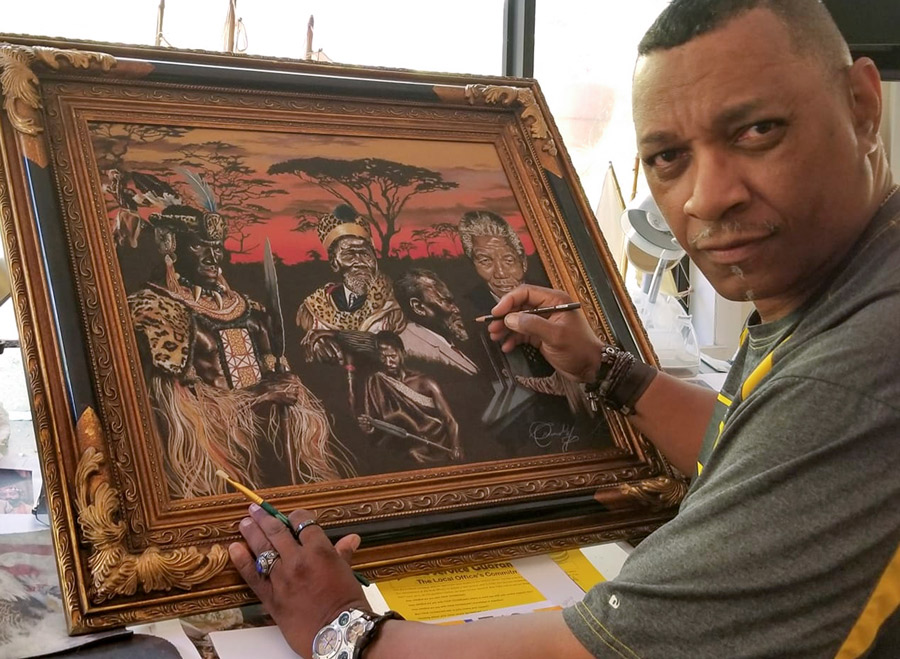Illuminating History

His pursuit of historical truth was sparked in his childhood by the encyclopedias his grandparents bought him from the Cooks Coffee truck in Erie, Pa. — one letter volume each weekend until he had collected the full set.
“They challenged me to read those encyclopedias,” Crumbly remembers. But the history his sharecropping grandfather lived didn’t match what he read in those books. As he compared recorded “facts” to his grandfather’s experience, the divide became clear. “From that, I learned how to dig,” he says. “That’s what my book is all about: putting history right and learning the truth.”
“What kind of a world would we have if we taught history starting from the truth? It’s the fountain of youth,” he says. “If you drink it, you’ll always be alive in some way. People will tell the stories you’ve told.”
In addition to creating historical paintings, the Army National Guard veteran frequently donates artworks in honor and memory of military service members. He also paints notable current celebrities as well as superstar athletes.
He hopes his work inspires others to dig into history, explore untold stories and challenge what they’re taught. To not settle into accepting facts as they’ve been recorded, but to do the hard work of cracking the surface to reveal the depth and layers of each historical event we witness.
“It’s never just black and white — like books make us think it should be,” says Crumbly. “There is always another layer to the truth. It’s our job to find it.”